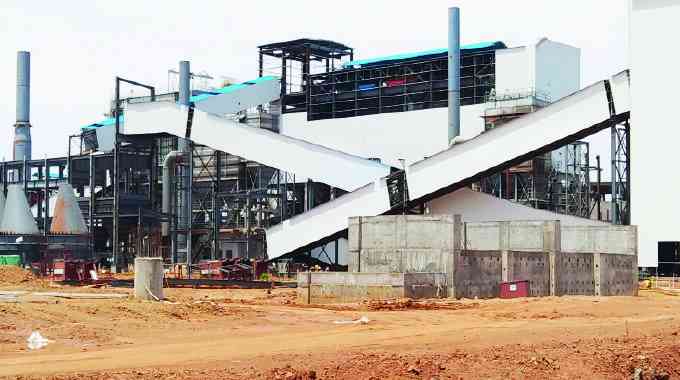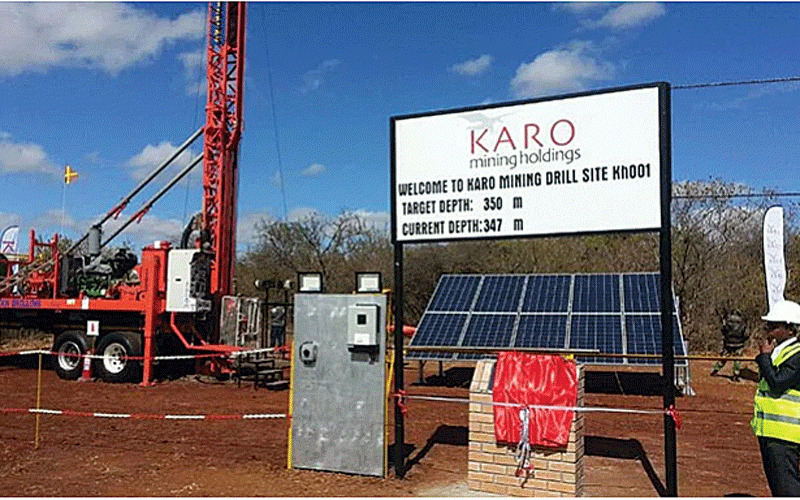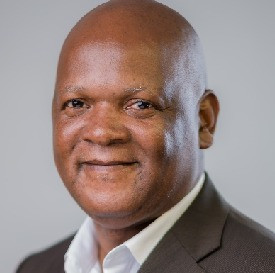
CHINESE steel giant Dinson Iron and Steel Company (Disco) says it is currently carrying out test runs as it prepares to fire up its US$1.5 billion plant in Zimbabwe, which begins production next month.
Disco, a unit of the Fortune 500-ranked Tsingshang, said the five million tonnes a year steel and ferrochrome operation, said by authorities to be ‘Africa’s largest’, was almost complete.
Wilfred Motsi, projects manager at Disco told Standardbusiness that they have completed the installation of an 88kv powerline and are currently doing test runs for the plant.
“So far, we have connected an 88kv power line and it was energised, so we are now carrying out test runs for the plant to make sure it works properly,we are almost there.
“So, until the test runs are over, we will begin production of pig iron,” Motsi said.
“We are anticipating the test runs to be complete by the end of this month and by June we shall start production.”
Early this year, Motsi disclosed that the company was looking forward to constructing another 400 kilovolt powerline to link the plant to Zesa Holdings’ grid at Sherwood.
“The 400 kilovolt (kv) powerline would be Disco’s second to link the Manhize-based plant to Zesa Holdings’ grid at Sherwood near Kwekwe,” he told the Zimbabwe Independent at the time.
- Africa’s ‘largest’ ferrochrome plant takes shape
- System Tazvida’s grave vandalised
- Africa’s ‘largest’ ferrochrome plant takes shape
- System Tazvida’s grave vandalised
Keep Reading
“Disco is already constructing another ‘quick win’ 88kv powerline to run on the same stretch.
“We have the 88kv line, which we are constructing as a quick win and the 400kv powerline, which the contractor is finalising on resource mobilisation.”
Motsi said they were also building a bigger dam, although it has different functions, but the most important of all is for a mini-hydro power.
The plant will require 100 megawatts (MW) during the first phase.
On completion, power demand would rise to 800MW, according to Motsi.
Under the 88kv deal, the Chinese firm said last year it would extend a US$55 million loan to Zesa, which will be used to construct the powerline.
The Manhize plant will be commissioned at a period when global steel prices are projected to remain subdued during 2024, despite a modest recovery in the Chinese market during the second half of 2023.
The depressed prices, which are expected in other markets outside China, may keep a leash on average global prices, according to research firms including BMI, a unit of Fitch Solutions.
In its December Resource and Energy quarterly, the Australian Office of the Chief Economist said globally, steel prices remained weak due to falling demand from manufacturers and construction firms in developed markets.
It is a sector wide concern that has unsettled markets across the globe, including in Zimbabwe.
In a paper titled ‘Softening Mineral Prices Weighing Down Viability of Mining Projects’, submitted to authorities by the Chamber of Mines in October last year, miners said the industry had gone through its worst 12 months in decades.
The industry had witnessed softening prices in most key minerals mined in Zimbabwe with rhodium (dropping by -74%), lithium (-69%), palladium (-41%), diamond (-60%) and nickel (-8%) the most affected.
Motsi struck an optimistic tone this week, saying there was still significant demand.
“I am very optimistic,” he said.
“Demand for steel is high and steel producers in Africa are not producing enough for the market.”
The plant will also open at a time when power supply has been erratic in Zimbabwe despite adding 600 MW to the national grid after commissioning two units at Hwange thermal power station at a cost of US$1,5 billion.
Despite prolonged rolling blackouts, Zimbabwean authorities have promised Disco that domestic generation will be enough to meet its steel operation requirements.
Last year, there were reports that authorities had reached out to Mozambique’s Mphanda Nkuwa hydroelectric power project to secure exclusive power imports for the five million tonnes-a-year steel and ferrochrome operation.
The Mphanda Nkuwa power facility is on the Zambezi River, about 60 kilometres downstream of the existing Cahora Bassa Dam near Tete, which also occasionally exports power to Zimbabwe.
The firm will shell out about US$4,5 billion to complete the facility, which is expected to reach financial close at the end of next year, before commissioning in 2031, according to the African Development Bank, which became advisor last May.
With most southern African economies battling to generate their own power, Mozambique appears to be positioning itself to bridge the gaps by building facilities reaching out to most of the affected countries including Zimbabwe.










